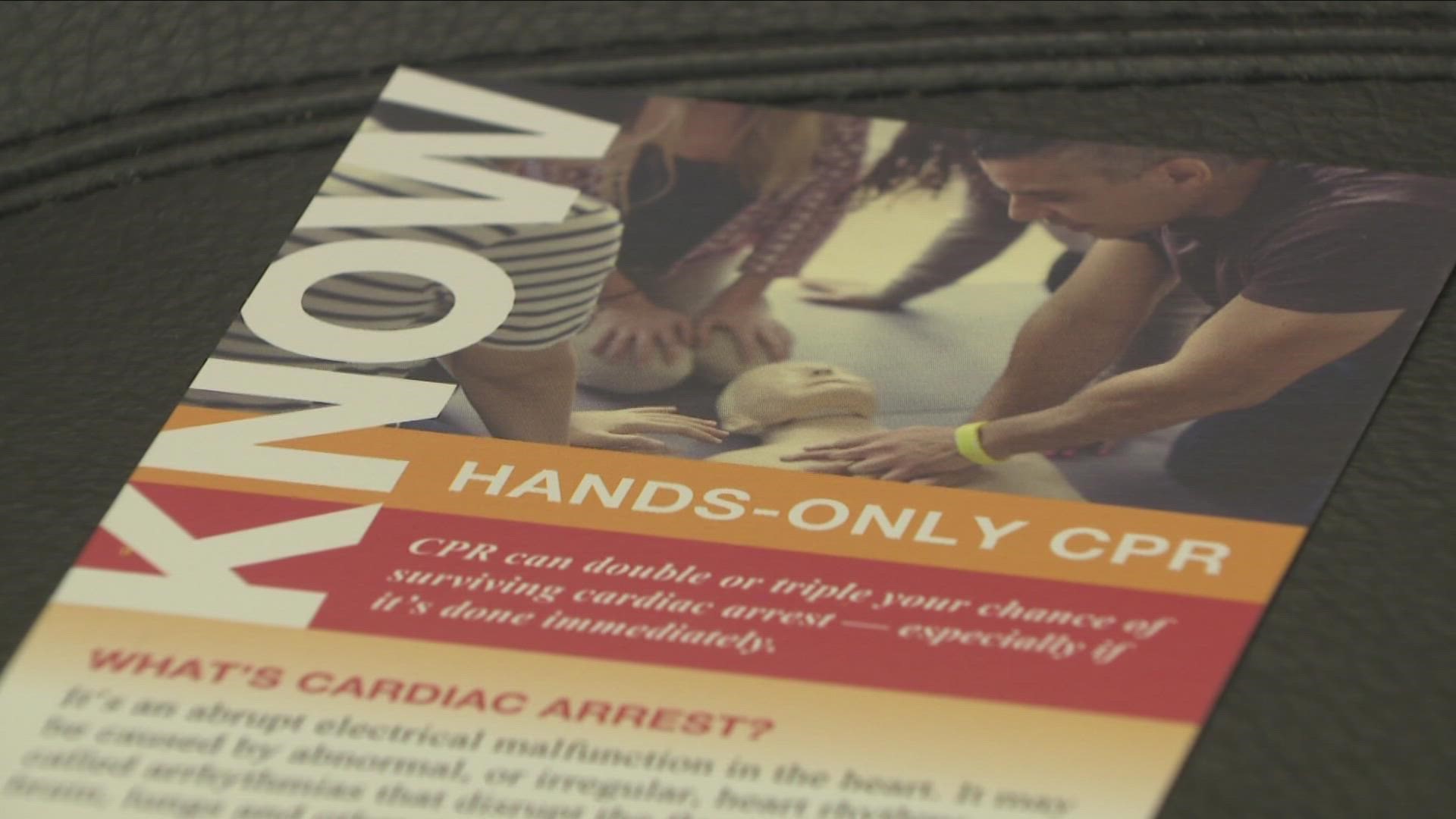BUFFALO, N.Y. — While this incident involving the Bills' Damar Hamlin stunned all of us and anyone watching, it could perhaps prompt us to think about what we would do if there were no doctors or trained medical staffers around and you're right there as someone's heart stops beating with a cardiac arrest.
Fortunately, you can take lessons and get CPR training even online which might be so valuable if you're in that situation.
First - don't panic - think.
Obviously, have someone call 911 but then be prepared to do those potentially life-saving compressions of cardiopulmonary resuscitation. Basically, you are manually pumping the heart to keep the blood flowing to the brain and other vital organs around the body.
Lisa Neff of the American Heart Association of Western New York explains.
"So a lot of people when I ask them - 'what is a cardiac arrest?' - the first people say oh it's a heart attack. And I go - no. They're actually two very different things. If you think of your body like a house - a heart attack is usually a plumbing issue. Whereas cardiac arrest is an electrical issue. A cardiac arrest is an electrical malfunction typically that can cause the heart to stop beating."
So to restore that heartbeat you can use basic hands-on cardiopulmonary resuscitation or bystander CPR if you will.
Obviously, first, have someone call 911 but then get set to jump in. Interlock your hands and press right on the sternum or bone in the center of the chest to manually pump the heart and send blood to the body.
You would first kneel over the patient who is placed on a hard, flat surface. Neff says next "Now good hard compressions. Push, push, push, push. People don't realize how exhausting CPR is. If you are performing it correctly, a two-inch deep compression is hard work. That's why we often say if you have other people around, put them to work as well. "
"Take turns. Every 30 compressions or so to alternate and that's exactly what it would look like the other person would be sitting on the other side of you - waiting ready to go. And you'd say - one, two. three switches and the other person would step right in," Neff says.
Again Neff is from the American Heart Association of Western New York and there's the Red Cross which may offer both in-person or online classes you can sign up for. There may be a modest cost.
Also ask your employer, church, or other organizations you are involved with to set up classes so costs can be covered or shared.
Neff says the vast majority of cardiac arrests actually happen in the home so you could be saving the life of a loved one if you learn how to do it.
And one last thing - learn how to use an AED or automatic external defibrillator which provides that electric shock to restart the heart. Many workplaces and public gathering places are now equipped with them.

